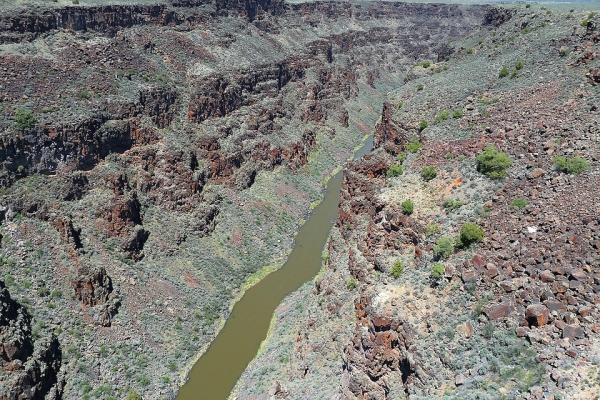Hiking through the emerald green canopy of the bosque, or riverside cottonwood forest, near downtown Albuquerque, Tricia Snyder, an advocate for WildEarth Guardians, believes zero hour has arrived for the Rio Grande. Though the river this day is high and a rich chocolatey-red color, water levels are historically low and dropping precipitously. Experts predict the Rio Grande will dry up completely all the way to Albuquerque this summer for the first time since the 1980s.
The story of the Rio Grande is similar to that of other desert mountain rivers in the U.S. Southwest, from the Colorado to the Gila. The water was apportioned to farmers and other users at a time when water levels were near historic highs. Now, as a megadrought has descended on the West, the most severe in 1,200 years, the flows are at crisis levels.
And to make things even more uncertain, the drought is accompanied by an aridification of the West — a prolonged drying that scientists say may become a permanent fixture in the region. The number and scope of wildfires are also increasing sharply; New Mexico’s ongoing Calf Canyon/Hermits Peak Fire has now burned 315,000 acres.
Read more at Yale Environment 360
Photo Credit: ArtTower via Pixabay


